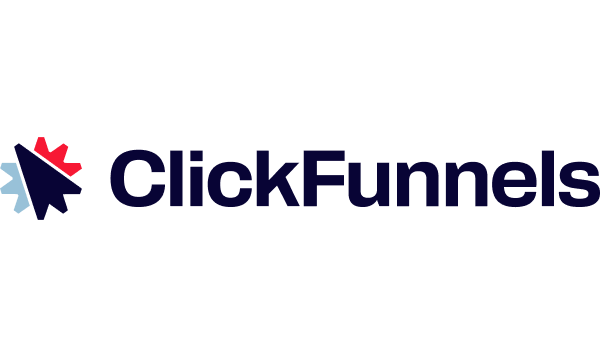- Premium features included
- No hidden costs or usage limits
- Scale from startup to enterprise



Finding the perfect email marketing and sales funnel platform can absolutely transform how your business converts leads and builds lasting customer relationships.
I’ve spent countless hours testing both GetResponse and ClickFunnels across various client projects, and I can tell you — the right choice depends entirely on what you’re trying to accomplish.
GetResponse has carved out its niche as the affordable, user-friendly option that brings email campaigns, landing pages, and marketing automation together under one roof.
Meanwhile, ClickFunnels takes a different approach, focusing specifically on building high-converting sales funnels with advanced tools designed to turn visitors into customers as efficiently as possible.
Let me walk you through how these platforms really compare in terms of pricing, features, usability, and performance — so you can figure out which one aligns with your specific marketing goals and business needs.
GetResponse
ClickFunnels
Best For
Small to mid-sized businesses needing all-in-one marketing
Businesses focused on sales funnels and lead generation
Pricing
Free plan + paid plans from $19/month
Paid plans from $127/month (no free plan)
Ease of Use
Beginner-friendly, quick to set up
Easy funnel builder, but more learning curve for advanced use
Value for Money
Affordable all-in-one tool (email + funnels)
High pricing but strong sales funnel focus
Overall Strengths
Overall Weaknesses
GetResponse
Email marketing, landing pages, webinars, automation in one platform
Funnel builder less advanced than ClickFunnels
ClickFunnels
Powerful funnel builder, upsell & checkout tools, designed for conversions
Expensive; limited email marketing tools without integrations
GetResponse
ClickFunnels
Email Campaigns
Automation
Landing Pages & Forms
Segmentation & Personalization
Reporting & Analytics
Integrations
GetResponse has evolved into an impressive all-in-one marketing platform that won’t break the bank. It’s particularly well-suited for small to medium businesses that need comprehensive marketing capabilities without juggling multiple tools.
The email marketing features are genuinely robust, the behavior-based automation can handle sophisticated campaigns, and the list segmentation options give you plenty of targeting flexibility.
I’ve found it especially valuable for clients who want both marketing diversity and simplicity without relying on a patchwork of different platforms.
The interface isn’t the most beautiful I’ve ever used, but it’s functional and gets the job done efficiently. For most businesses, especially those focused on content marketing and lead nurturing, GetResponse hits a sweet spot of functionality and affordability.
ClickFunnels takes a completely different approach, focusing almost exclusively on creating high-performing sales funnels. It’s purpose-built for maximizing conversions, generating leads, and optimizing every step of your sales process.
Their funnel builder is truly exceptional, allowing even non-technical users to create sophisticated sales pathways. The customizable checkout process and upsell/downsell features are particularly valuable for ecommerce businesses or anyone selling digital products.
However, email marketing is clearly a secondary concern here. While you can send basic broadcasts and follow-ups, ClickFunnels isn’t trying to be an email marketing platform.
It’s designed for entrepreneurs and businesses that prioritize direct sales over nurturing campaigns, making it perfect for product launches, coaching services, and membership sites.
Subscriber Count
GetResponse Pricing (Email Marketing Plan)
ClickFunnels Pricing (Basic Plan)
Key Differences
1,000
From $19/month
From $127/month
GetResponse offers email + automation; ClickFunnels focuses on funnel building.
2,500
From $29/month
From $127/month
GetResponse more affordable; ClickFunnels pricing not list-size dependent.
5,000
From $54/month
From $127/month
GetResponse provides automation & webinars; ClickFunnels prioritizes funnel tools.
10,000
From $79/month
From $127/month
GetResponse scales by subscriber count; ClickFunnels offers flat pricing but fewer email features.
25,000
From $174/month
From $127/month
GetResponse becomes pricier at scale; ClickFunnels cost remains fixed but email tools limited.
GetResponse takes a flexible approach to pricing, scaling with your subscriber count while including features like landing pages, webinars, and conversion funnels even at lower tiers. This makes it particularly appealing for businesses just starting out or those with modest email lists.
ClickFunnels, on the other hand, uses flat-rate pricing that doesn’t change based on how many subscribers you have. This predictability can be appealing, though the entry price is substantially higher.
The value proposition centers entirely around the sophisticated sales funnel tools, checkout optimization features, and conversion-focused templates.
For email-centric marketing strategies, GetResponse is clearly the more cost-effective option. But if your business model revolves around direct sales and conversion optimization, ClickFunnels might justify its premium price through higher conversion rates and average order values.
GetResponse Free Plan
ClickFunnels Free Plan
Subscribers
Up to 500 subscribers
No permanent free plan (14-day free trial only)
Emails/Month
Unlimited emails
N/A
Automation
No automation in free plan
N/A — Automation available during trial
Landing Pages/Forms
1 landing page + signup forms
Full funnel & page builder access (trial)
Branding
GetResponse branding on emails & pages
No branding restrictions (during trial)
GetResponse offers a genuinely useful free tier if you’re just getting started. You can manage up to 500 subscribers and send unlimited emails, which is surprisingly generous. The single landing page limitation is restrictive, but sufficient for testing basic lead generation.
The lack of automation features means you’re limited to manual campaigns, but that’s often enough for newcomers to email marketing.
ClickFunnels takes an entirely different approach with no permanent free option. Their 14-day trial does provide full access to their funnel builder and sales tools, allowing you to thoroughly test the platform before committing. This makes sense given their focus on users who are ready to invest in serious sales infrastructure.
For those wanting to start with zero budget, GetResponse is the clear winner. But if you’re prepared to make a financial commitment to conversion optimization, ClickFunnels’ trial gives you a comprehensive look at their premium offerings.
GetResponse
ClickFunnels
GetResponse hits the sweet spot for small to mid-sized businesses looking for an affordable solution that covers most marketing needs in one platform.
If your strategy revolves around email marketing, content distribution, webinars, and basic sales funnels, GetResponse delivers excellent value without requiring multiple subscriptions.
It’s particularly well-suited for content creators, service providers, and businesses focused on nurturing leads through educational content and relationship building. The automation capabilities are sufficient for most standard marketing sequences, though not as advanced as specialized tools.
The primary limitation is that the funnel building isn’t as sophisticated as ClickFunnels, making it less ideal for businesses with complex sales processes or those heavily focused on upsells and order maximization.
ClickFunnels clearly shines for businesses that prioritize direct sales, conversion optimization, and maximizing revenue per customer. Its specialized tools for building high-converting funnels, optimizing checkout processes, and implementing upsell/downsell flows can directly impact your bottom line.
It’s the perfect choice for ecommerce stores, course creators, coaches, and membership site owners who need sophisticated sales pathways rather than traditional email marketing. The flat pricing structure becomes increasingly attractive as your subscriber list grows, potentially offsetting the higher initial cost.
The main drawback is the limited email marketing functionality, which means you’ll likely need additional tools for nurturing campaigns and advanced personalization.
When I’ve reviewed hundreds of user testimonials, GetResponse consistently earns praise for its straightforward interface and intuitive setup process. Users particularly appreciate how quickly they can create email campaigns and landing pages without specialized technical knowledge.
The all-in-one dashboard gets high marks, though some users mention the advanced automation tools require a bit more learning time.
ClickFunnels receives enthusiastic feedback for its drag-and-drop funnel builder, which lets even marketing newcomers create professional-looking sales sequences. The visual editor and pre-built templates are frequently highlighted as time-savers.
However, a common thread in reviews suggests that building truly optimized, complex funnels does require investment in learning the platform’s nuances.
GetResponse offers a gentler onboarding experience, especially for basic email campaigns and list building. Most users report being able to send their first campaign within hours of signing up. The automation and funnel tools are accessible but do require more time to master fully.
ClickFunnels presents a steeper initial learning curve, particularly when it comes to customizing funnel steps, integrating external tools, or setting up sophisticated automation sequences. The platform’s depth and flexibility come with additional complexity that typically requires several weeks to navigate confidently.
GetResponse users frequently highlight three key strengths: affordability, comprehensive marketing features, and responsive customer support. The platform’s versatility allows many businesses to consolidate multiple marketing tools into one subscription.
The most common criticism centers around the relative simplicity of the funnel builder compared to dedicated conversion platforms.
ClickFunnels inspires passionate reviews from entrepreneurs who credit the platform with transforming their sales processes. Users consistently praise the powerful funnel creation tools, upsell capabilities, and conversion-focused templates.
However, the higher price point is mentioned in nearly every critical review, along with the need for additional integrations to handle comprehensive email marketing.
What’s particularly interesting is that while ClickFunnels scores higher on G2 and Capterra, GetResponse edges ahead on Trustpilot — suggesting that different business types may have varying experiences with each platform depending on their specific marketing needs.
